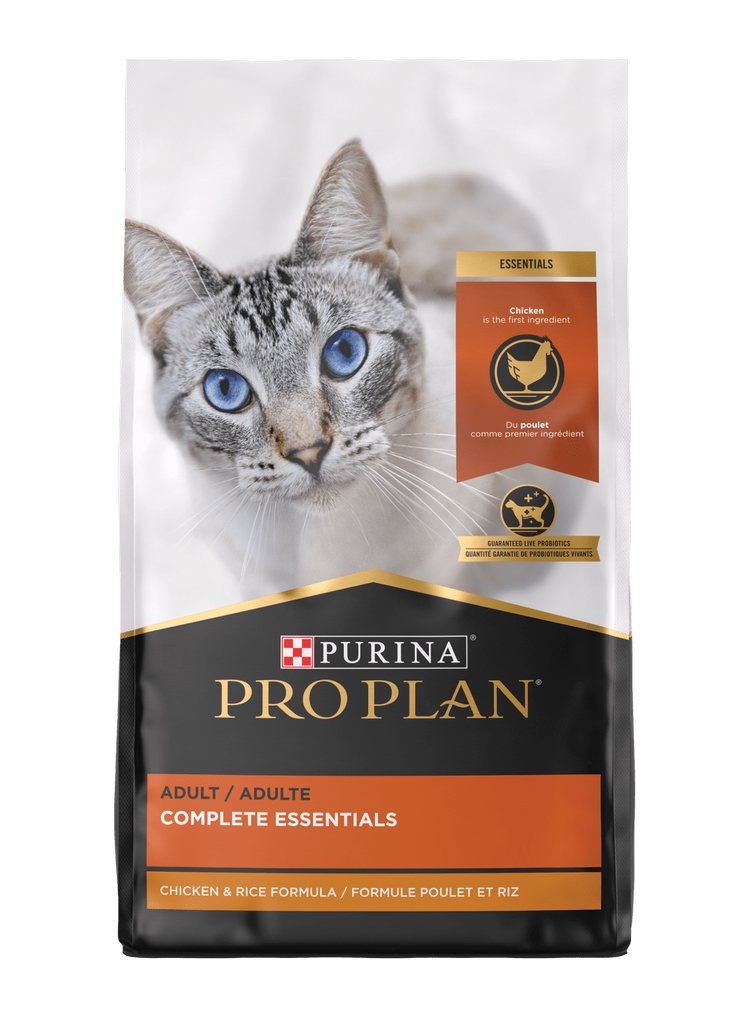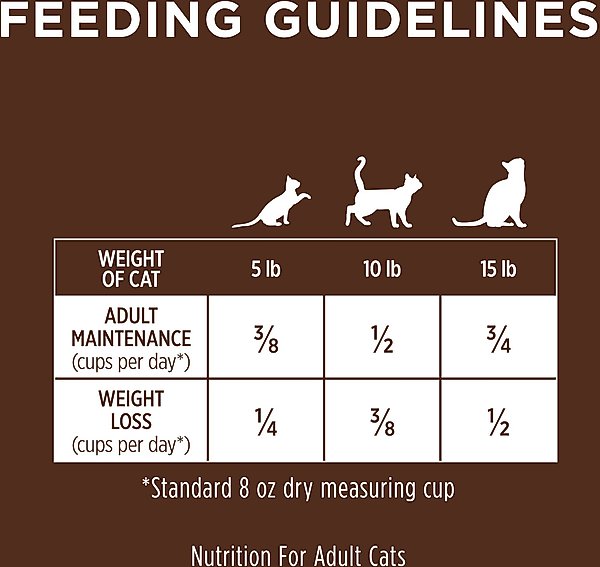Are you unsure about how many cups of cat food your furry friend needs each day? Feeding your cat the right amount is more important than you might think.
Too little food can leave them hungry and unhappy, while too much can lead to health problems. You’ll discover simple guidelines to keep your cat healthy and satisfied. Keep reading, and you’ll learn exactly how to measure the perfect daily portion for your cat’s unique needs.
Daily Feeding Basics
Feeding your cat the right amount each day is key to their health. Cats need a balanced diet that fits their size, age, and activity. Overfeeding can cause weight problems. Underfeeding may lead to nutrient shortages. Understanding daily feeding basics helps keep your cat happy and healthy.
Calorie Needs By Cat Age
Kittens need more calories to grow strong. They burn energy fast and must eat often. Adult cats require fewer calories to maintain weight. Senior cats often need even fewer calories because they move less. Adjust feeding amounts as your cat ages to match their energy needs.
Impact Of Cat Size And Breed
Small cats eat less than large cats. Larger breeds like Maine Coons need more food to fuel their bigger bodies. Smaller breeds and mixed breeds usually need less food. Body shape also matters. A lean cat may need more calories than a heavier one.
Activity Level Considerations
Active cats burn more calories daily. Outdoor cats or those who play a lot need more food. Indoor cats often move less and need fewer calories. Watch your cat’s behavior and adjust food amounts to match their activity. This balance keeps their weight healthy.
Types Of Cat Food
Understanding the types of cat food is key to figuring out how many cups your cat needs each day. Cats have different preferences and dietary needs, and the type of food you choose affects portion sizes. Let’s look at the main types of cat food and how they impact your feeding routine.
Dry Food Portions
Dry cat food is convenient and has a long shelf life. Typically, cats need about 1/4 to 1/3 cup of dry food per meal, depending on their weight and activity level.
Since dry food is calorie-dense, measuring the portion is important to avoid overfeeding. You might notice your cat eating more slowly or nibbling throughout the day, which is common with dry kibble.
Wet Food Portions
Wet food usually comes in cans or pouches and contains more moisture. Most cats require about 3 to 6 ounces of wet food daily, split into two meals.
Because wet food is less calorie-dense, cats often eat larger portions compared to dry food. You may find your cat more enthusiastic about wet meals, especially if they prefer stronger flavors or softer textures.
Mixing Dry And Wet Food
Many cat owners combine dry and wet food to balance convenience and hydration. When mixing, adjust portions so the total calories meet your cat’s daily needs.
For example, if you feed 1/4 cup of dry food in the morning, you could give about 3 ounces of wet food in the evening. This mix keeps your cat interested and can improve their overall nutrition.
Adjusting Portions
Adjusting your cat’s food portions is key to keeping them healthy and happy. Cats have different needs based on their size, age, and activity level. Feeding the right amount helps avoid weight problems and supports their overall well-being.
Weight Management Tips
Keep an eye on your cat’s weight regularly. Overweight cats need smaller portions to lose pounds safely. Underweight cats may need extra food or a more nutritious diet.
- Use a measuring cup for accurate portions.
- Feed smaller meals more often throughout the day.
- Avoid free feeding to prevent overeating.
- Consult your vet for portion advice tailored to your cat.
Health Conditions Affecting Diet
Some health problems change your cat’s diet needs. Diabetes, kidney issues, or allergies require special food amounts or types. Adjust portions based on your vet’s recommendations to manage these conditions well.
- Monitor your cat’s appetite and weight closely.
- Provide prescribed food without mixing other types.
- Adjust portions during illness or recovery as needed.
Seasonal Feeding Changes
Cats may need different food amounts depending on the season. In colder months, they might burn more energy and need extra food. During warmer months, their appetite might drop, so reduce portions slightly.
- Observe your cat’s activity level and weight regularly.
- Increase or decrease food gradually to avoid upset stomach.
- Keep fresh water available at all times, especially in summer.

Credit: www.purina.com
Measuring And Serving
Getting the amount of cat food right starts with accurate measuring and smart serving habits. How you measure the food can impact your cat’s health more than you might think. Small differences in portion size add up over days and weeks, affecting your cat’s weight and energy.
Using Measuring Tools
Using a simple measuring cup or a kitchen scale makes a big difference. Measuring cups designed for dry food help you serve consistent portions every time. A digital scale can be even more precise, especially if your cat needs a special diet.
Have you noticed how easy it is to eyeball a portion and end up giving too much? I once thought my cat needed more food, but a quick switch to measuring tools showed I was overfeeding by nearly 25%. That small change helped her maintain a healthy weight without feeling hungry.
Feeding Schedule Ideas
Setting a regular feeding schedule keeps your cat’s digestion steady and prevents overeating. Many cat owners find success with two meals a day—morning and evening. You can also try smaller portions divided into three or four servings if your cat tends to graze or get bored.
Think about your daily routine and when you’re most available to feed your cat. Consistency helps your pet know when to expect food, reducing anxiety and begging behaviors. Have you ever noticed your cat waiting by the bowl at the same time every day?
Avoiding Overfeeding
Overfeeding can lead to serious health problems like obesity and diabetes. Pay attention to your cat’s activity level and adjust portions accordingly. If your cat is less active, reduce the amount of food rather than assuming they need the same quantity all year round.
Watch for signs your cat is full, such as walking away from the bowl or leaving food behind. Resist the urge to offer extra treats or table scraps, which add hidden calories. Have you tried measuring your cat’s food and still noticed weight gain? It might be time to consult your vet for tailored advice.
Special Feeding Situations
Special feeding situations require more attention because your cat’s needs can change based on age, health, and living environment. Understanding these differences helps you provide the right amount of food and the best nutrition to keep your cat healthy and happy. Let’s look at how feeding varies for kittens, senior cats, and households with multiple cats.
Feeding Kittens Vs Adults
Kittens have a much higher energy demand than adult cats. Their growing bodies need more calories and nutrients, so they often require feeding 3 to 4 times a day.
Adult cats usually eat 2 meals daily, but the amount depends on their weight, activity level, and food type. Feeding too much can lead to obesity, so measuring portions carefully is key.
If you have a kitten, think about how much they eat in a day compared to your adult cat. Have you noticed your kitten finishing their meal in seconds? That’s a sign they need frequent feeding with nutrient-rich food.
Senior Cat Nutrition
Older cats tend to eat less but still need balanced nutrition to support their slower metabolism and possible health issues. You might notice your senior cat’s appetite changes, which means you need to adjust feeding amounts and types.
Foods higher in protein but lower in calories often suit senior cats best. Adding wet food can help with hydration and make meals easier to chew, especially if your cat has dental problems.
Are you watching your senior cat closely for weight loss or gain? These changes often signal the need to tweak their feeding routine or consult your vet.
Feeding Multiple Cats
Feeding several cats in one home can be challenging because each cat may have different dietary needs and eating habits. Some cats eat quickly, while others take their time, which can lead to overeating or food guarding.
Try feeding cats in separate bowls placed in different areas to prevent competition. Monitor each cat’s intake and adjust portions to avoid weight problems.
Have you considered how each cat’s personality affects feeding time? Understanding this can help you manage meal portions and ensure every cat gets what they need.

Credit: www.reddit.com

Credit: www.chewy.com
Frequently Asked Questions
How Much Cat Food Should I Feed Daily?
The amount of cat food depends on your cat’s age, weight, and activity level. Generally, an adult cat needs 1/4 to 1/2 cup of dry food daily. Always consult your veterinarian for personalized advice to ensure your cat’s nutritional needs are met.
Can I Feed My Cat Twice A Day?
Yes, feeding your cat twice a day is ideal for maintaining a healthy routine. Divide the total daily amount into two meals. Ensure each meal is balanced to meet your cat’s nutritional needs. Consistent feeding times can help regulate your cat’s metabolism and prevent overeating.
What Factors Affect A Cat’s Food Intake?
Several factors affect a cat’s food intake, including age, weight, activity level, and health status. Kittens and active cats may require more food, while older or less active cats need less. Always adjust portions based on your cat’s specific needs and consult a veterinarian for advice.
Is Wet Or Dry Cat Food Better?
Both wet and dry cat foods have benefits. Wet food provides hydration and can be more palatable. Dry food is convenient and supports dental health. A combination of both can offer balanced nutrition. Choose high-quality options and consult your vet for the best diet plan.
Conclusion
Feeding your cat the right amount keeps them healthy and happy. Watch their weight and adjust food as needed. Every cat is different; some need more or less. Check the packaging and talk to your vet for advice. Fresh water should always be available too.
A balanced diet helps your cat live a long life. Small changes can make a big difference. Keep feeding simple and consistent. Your cat will thank you with purrs and love.

